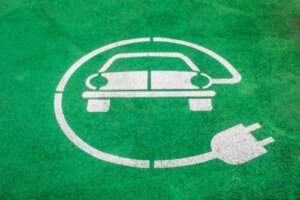6 Advantages and Disadvantages of Electric Cars

The automotive industry is undergoing a major transition in recent years. While internal combustion vehicles continue to lead the market, electric cars are becoming more and more common in some countries. However, the choice often depends on factors such as local infrastructure, needs, and personal preferences.
It’s common to hear in discussions on sustainable mobility that the shift to electric motors is the future of urban transportation. Although the numbers are growing and government incentives for their acquisition are advantageous, electric cars are still far from taking over the road.
Many users choose electric vehicles to reduce their carbon footprint due to the low pollution they emit. However, there are other reasons that favor their use. Let’s take a closer look.
6 advantages of using electric cars
There are many advantages to driving this type of vehicle. As far as the environment is concerned, gas emissions are reduced. In addition, thanks to technological advances, it’s possible to approach the comfort and performance of any traditional car.
1. Environment
The operation of electric cars is based on their batteries and the transformation of electricity into propulsion energy. This means that it doesn’t use fuels such as gasoline or diesel, which cause a significant percentage of environmental pollution.
Stopping the current levels of global warming is an urgent task for mankind. This type of automobile contributes to that.
2. Noise pollution
A problem in many large cities is the high level of noise pollution. By not using combustion, the electric car is quieter than the rest, something that contributes to the quality of individual and social life.

3. Costs and maintenance
Regarding costs, the use of electric cars has different variants to analyze. In terms of maintenance, they tend to have an advantage over traditional cars. As they are more reliable and compact, the motors generate fewer failures, which results in lower repair costs.
Brake pads also don’t wear out as quickly and require fewer (and more sporadic) changes. In addition, gasoline and other fuels are increasingly expensive, so switching to electricity is another advantage in economic terms.
4. Electric cars take up less space
Many electric cars may look small on the outside. However, they usually have a large and comfortable interior space for the user. This is due to the absence of a gearbox, clutch, and smaller engine size.
We think you may also find this article interesting: Is it Possible to Be Allergic to Electricity?
5. Insurance and parking
In general, insurance companies offer cheaper policies for electric cars, due to the lower risks and inconveniences they usually generate. On the other hand, some cities encourage their use by establishing free parking lots.
6. Efficiency and general savings
Electric cars are more efficient than traditional cars by a high percentage. In addition, energy consumption costs much less compared to internal combustion engines.
Energy consumption is estimated to be 6 times lower.
6 disadvantages of electric cars
Apart from all of the positive aspects of these vehicles, there are a number of disadvantages that generate resistance in many users. Some of these disadvantages are expected to be solved in the near future; others depend on personal preferences.
1. Autonomy
One of the most common disadvantages when comparing electric and traditional cars is their autonomy. Although there are models on the market with 600 kilometers of range, such as the Tesla Model 3, they tend to have high costs. As for the more affordable options, the range ranges from 150 to 450 kilometers.
In any case, this is an issue that improves every year, thanks to technological advances. In addition, factors such as the state of the battery, speed, and the use of air conditioning also play a part in the figures.
2. Charging time and method
One of the main disadvantages affecting electric cars is their charging time. In general, they require between 5 and 7 hours of connection when the battery is empty.
For this reason, many users choose to install their own charging stations, either in garages or parking lots. This allows the vehicle to have overnight charging at rest, although the cost is very high.
As for the network of stations, it depends on the infrastructure of each country. Not all places have charging points. In the United States, the Tesla company is responsible for increasing that number year after year. However, in other countries, this can present a complication for users.
3. Lower power
In general, many models do not reach the number of revolutions, power, and speed of internal combustion vehicles. However, this is another issue that is catching up as the years go by and technology advances.
4. Workshops
Although this is less likely to occur, electric cars can also break down. In this case, the availability of specialized workshops is much lower, so a repair can mean high costs or significant delays.
5. Selling price
One of the aspects that makes it expensive to obtain an electric vehicle is the price of the battery. Although they last between 7 and 10 years, or a distance of approximately 200 thousand kilometers, at the time of changing or repairing it, the cost is very high.
For this reason, there are more and more leasing options. A new model is acquired, without a battery, for a much lower cost, and the battery is then rented.

6. Pollution
Although many users choose these vehicles to reduce their individual carbon footprint, it should be noted that they are not 100% environmentally friendly. Although they have no gas emissions and, compared to gasoline cars, their environmental pollution is lower, the production of electricity does pollute.
This industry is often based on the use of fossil fuels, such as coal or oil, which also plays a role in the problem of global warming. However, this is an issue that can be solved by shifting electricity generation to the use of renewable energies, such as solar or wind power.
Like this article? We think you may also like to read: Ideas for Restoring and Recycling Your Old Furniture
Are electric cars worth purchasing?
Apart from the analysis of the advantages and disadvantages of using electric vehicles, it’s clear that a transition in the industry is needed. During COP26, the last convention against climate change, representatives of different nations and manufacturers proposed a progressive reduction of gasoline and diesel cars by 2040.
These international policies encourage users to obtain electric cars in different ways. At present, this is the best option for a more sustainable future.
All these issues cause that, beyond the still wide dominance of traditional cars in the market, sales figures are increasing every year. Between 2019 and 2021 there was a significant increase in sales of electric vehicles, especially in countries such as Spain, Mexico, and the United States.
It’s estimated that the market for these cars comprises about 2% of the total. However, the projection for 2025 indicates an increase of up to 10%.
Users recommend electric cars
Thousands of electric car users recommend their use, downplaying the disadvantages and highlighting their many advantages. Several of their disadvantages are expected to be solved in the near future, such as the level of autonomy and power.
A thorough analysis at the time of purchasing a combustion or electric vehicle will depend on personal tastes and preferences. In addition to the infrastructure of the country of residence. However, there’s no doubt that these models are an increasingly recommended option for getting around.
All cited sources were thoroughly reviewed by our team to ensure their quality, reliability, currency, and validity. The bibliography of this article was considered reliable and of academic or scientific accuracy.
- Mercado, Alexis, Córdova, Karenia, Desarrollo tecnológico en baterías e impulsión eléctrica ¿Sistemas tecnológicos disruptivos promovidos por imperativos ambientales?. Cuadernos del CENDES [Internet]. 2014;31(85):1-21. Recuperado de: https://www.redalyc.org/articulo.oa?id=40331800002
- Maks Davis, Michael, and Michael Maks Davis. “Más Allá Del Petróleo: Una Mirada Al Impacto de Los Autos Eléctricos En Las Tres Principales Ciudades de Ecuador.” Estoa. Revista de la Facultad de Arquitectura y Urbanismo de la Universidad de Cuenca 6.10 (2017): 202–214. Disponible en: http://scielo.senescyt.gob.ec/scielo.php?script=sci_arttext&pid=S1390-92742017000100202&lng=es&nrm=iso&tlng=es
- TOBÓN-RAMÍREZ, Diego Alejandro; RESTREPO-LAVERDE, José Valentín. Desarrollo de estación de carga de vehículos eléctricos. Lámpsakos, [S.l.], n. 19, p. 22-29, dec. 2018. ISSN 2145-4086. Disponible en: https://doi.org/10.21501/21454086.2532
- CARREÑO AGUILLÓN, ELSY DEL PILAR, VACCA MELO, EDWIN ALFONSO, LUGO ARIZA, INGRID, Diseño y fabricación de un vehículo autónomo impulsado por energía solar. Tecnura [Internet]. 2012;16(32):91-106. Recuperado de: https://www.redalyc.org/articulo.oa?id=257024143009
- García Garnica, Alejandro, Reyes Álvarez, Juan, Patentamiento, trayectoria y características de las baterias automotrices: el caso de los autos híbridos. Entreciencias: Diálogos en la Sociedad del Conocimiento [Internet]. 2015;3(6):41-56. Recuperado de: https://www.redalyc.org/articulo.oa?id=457644944004
This text is provided for informational purposes only and does not replace consultation with a professional. If in doubt, consult your specialist.








